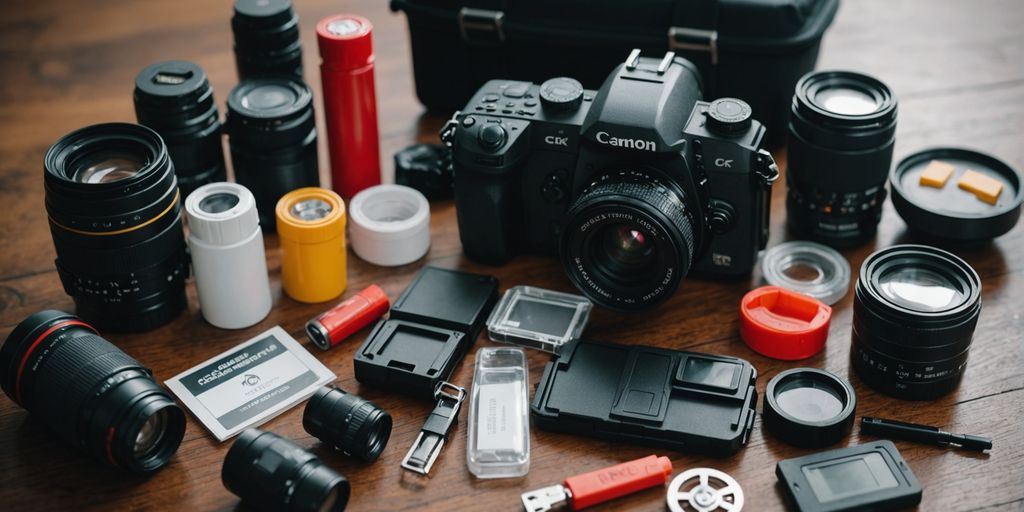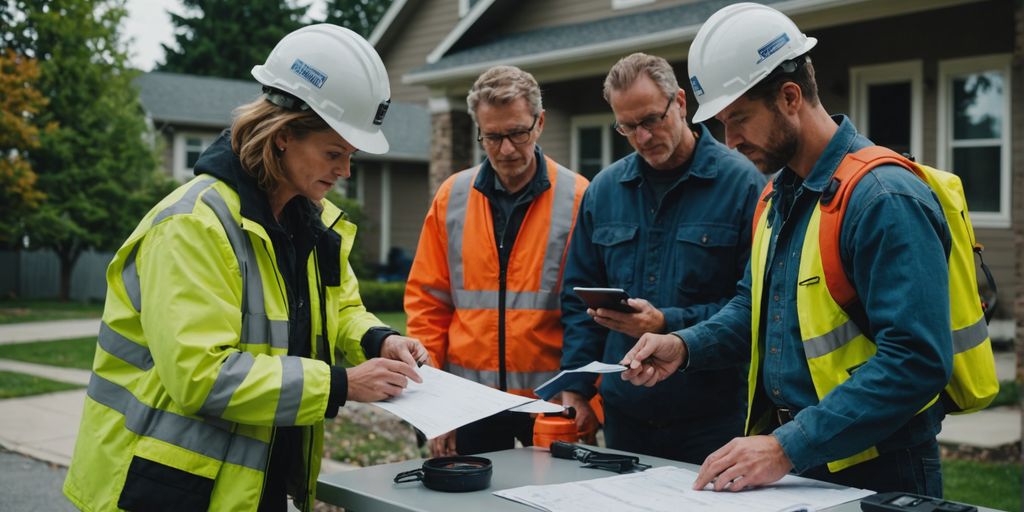Emergencies can happen at any time, and being prepared is key to ensuring your safety and well-being. Whether it’s a natural disaster, power outage, or any unexpected event, having the right supplies on hand can make all the difference. This article will guide you through the top 10 essential items you need for emergency preparedness. Are you ready?
Key Takeaways
- Always have at least one gallon of water per person per day for at least three days.
- Stock up on non-perishable foods that are easy to prepare and can last for a long time.
- A flashlight with extra batteries is crucial for navigating in the dark.
- Keep a battery-powered or hand-crank radio to stay updated on emergency information.
- Don’t forget a first aid kit and a 7-day supply of any necessary medications.
Water (one gallon per person, per day)
Water is the most crucial item in any emergency preparedness kit. FEMA recommends storing at least one gallon of water per person per day. This amount covers drinking and basic hygiene needs. For a family of four, this means having 12 gallons of water for a three-day supply.
Storage Tips
- Use sealed, unbreakable containers to store water.
- Label each container with the storage date.
- Replace stored water every six months to ensure freshness.
Purification Options
If you can’t store enough water, consider a water purification system. These systems can provide clean drinking water for extended periods, making them a viable long-term solution.
In an emergency, having a reliable water supply can make all the difference. Make sure you’re prepared by following these guidelines.
Food (non-perishable, easy-to-prepare items)
When preparing for emergencies, having a stockpile of non-perishable, easy-to-prepare food items is crucial. These foods ensure you and your family stay nourished when fresh food isn’t available. Here are some essential items to consider:
- Canned goods: soups, fruits, vegetables, beans
- Grains: cereals, pastas, oatmeal
- Protein: peanut butter, canned meat, nuts
- Snacks: granola bars, dried fruit
- Beverages: boxed milk, juice boxes
It’s a good idea to choose foods that you already enjoy and eat regularly. This way, you can rotate them out before they expire. Don’t forget to include a manual can opener in your kit to access your canned goods easily.
In times of crisis, having a well-thought-out food supply can make a significant difference in your comfort and well-being. Be prepared: the world is unpredictable. Be ready for anything.
Flashlight
A flashlight is a must-have in any emergency kit. In a power outage, a reliable flashlight can be a lifesaver. The ThruNite Archer 2A V3 is a top pick due to its wide range of brightness settings and easy-to-use interface. This model is also durable, surviving drops and full immersion in water.
When choosing a flashlight, consider the following features:
- Brightness settings: Multiple settings allow you to adjust the light intensity as needed.
- Battery life: Long-lasting batteries are crucial during extended power outages.
- Durability: Look for models that can withstand drops and water exposure.
- Size and weight: A compact and lightweight flashlight is easier to carry and store.
In an emergency, having a flashlight that you can rely on is essential. Make sure to test your flashlight regularly and keep extra batteries on hand.
For those who prefer hands-free options, headlamps are a great alternative. They are useful for tasks that require both hands, like repairs or first aid. The Black Diamond Spot 400 headlamp is a popular choice, offering various brightness settings and a comfortable fit.
Battery-powered or hand-crank radio
In an emergency, staying informed is crucial. A battery-powered or hand-crank radio ensures you can receive important updates even when the power is out. These radios can tune in to AM/FM and NOAA weather channels, providing vital information and alerts.
Many models, like the ER310 from Midland Radio, offer multiple power sources. You can use solar panels, a hand crank, or a rechargeable battery. This means you can stay connected no matter the situation. For instance, just one minute of cranking can give you 10 minutes of radio time or a few minutes of flashlight use.
Additionally, these radios often come with extra features. Some include built-in flashlights, USB ports for charging devices, and durable designs that can withstand harsh conditions. This makes them a versatile tool in your emergency kit.
Having a reliable radio can make a big difference in an emergency, keeping you informed and prepared for any situation.
Extra batteries
In an emergency, having extra batteries can be a lifesaver. They are essential to operate the emergency radio, flashlight, and some medical devices. During a power outage, rechargeable batteries aren’t very useful, so it’s smart to keep a few disposable ones on hand. Stocking up on extra household batteries ensures you can power important items like flashlights and radios.
- Disposable Batteries: These are recommended over rechargeable ones in emergencies. They are reliable and have a long shelf life.
- Battery Packs: Consider keeping a USB-A or USB-C battery pack. These can help recharge smaller devices when needed.
- Solar Chargers: While they can’t store power, they can generate it during the day to recharge devices.
It’s crucial to rotate your batteries regularly to ensure they are always ready for use in an emergency.
First aid kit
A first aid kit is an absolute must-have for any home. You can put together your own, but there are also many companies and organizations that sell complete kits with almost everything you need. The American Red Cross knows a few things about first aid and their kits are a great starting point.
A quality first aid kit should include:
- Adhesive bandages
- Gauze pads
- Antiseptic wipes
- Tweezers
- Scissors
- Pain relievers
- A first aid manual
Having a well-stocked first aid kit can make a big difference in an emergency. It’s better to be prepared and not need it than to need it and not be prepared.
Medications (7-day supply)
In an emergency, having a 7-day supply of medications is crucial. This includes both prescription and over-the-counter medicines. Make sure to check the prescription refill rules and emergency refills with your pharmacy or insurance provider. Some places allow you to refill your prescription a few days early, which can be a lifesaver in a crisis.
Tips for Medication Preparedness
- Consult Your Doctor: Ask if you can get a 30-day (or longer) emergency supply of your medications.
- Keep a List: Write down all your medications, including dosages and the times you take them.
- Store Safely: Keep medications in a waterproof container to protect them from damage.
- Regular Checks: Make it a habit to check your medication supply regularly and replace any that are close to expiring.
It’s important to have at least a 7- to 10-day supply of your prescription medications. This ensures you are prepared for any unexpected situations.
By planning ahead, you can ensure that you and your family have the necessary medications to stay healthy during an emergency.
Multi-purpose tool
A multi-purpose tool is a must-have in any emergency preparedness kit. This versatile tool can perform various functions, making it invaluable during emergencies. Whether you need to shut off gas, pry open doors, or dig through debris, a multi-purpose tool can handle it all. For instance, a 4-in-1 emergency tool can shut off gas and water, pry open doors, and dig through debris, making it a lightweight yet heavy-duty option.
Some multi-purpose tools come with additional features like pliers, bit drivers, pocket clips, and carabiners. These tools are designed to be compact and easy to carry, ensuring you have essential tools at your fingertips when you need them most. The Leatherman Skeletool CX, for example, includes a high-quality, 2.6-inch carbon-fiber stainless steel blade that can be deployed with one hand, adding to its convenience and functionality.
- Shuts off gas and water
- Pries open doors
- Digs through debris
- Includes pliers, bit drivers, and pocket clips
Having a multi-purpose tool in your emergency kit ensures that you are prepared for various situations, making it an essential item for any emergency preparedness plan.
Sanitation and personal hygiene items
In an emergency, keeping clean is crucial to prevent illness and maintain morale. Make sure to stock your emergency kit with wet wipes, feminine hygiene products, toilet paper, and other essentials. These items help you stay clean when water is scarce.
Essential Items
- Hand sanitizer: Keeps your hands germ-free when soap and water aren’t available.
- Moist towelettes: Useful for quick clean-ups and personal hygiene.
- Garbage bags: Superthick ones can be used for waste disposal and even as makeshift toilets.
- Toothbrush and toothpaste: Basic items to maintain oral hygiene.
- Soap: Essential for washing hands and body.
- Feminine supplies: Tampons, menstrual pads, or menstrual cups.
- Diapers: For babies or adults who need them.
- Spare pair of glasses: In case your primary pair gets lost or broken.
These comprehensive hygiene kits are particularly beneficial in shelters and during disaster relief operations, where access to such products is often limited.
Emergency blanket
An emergency blanket is a crucial item in any survival kit. These blankets are typically made of a reflective foil material that helps keep body heat in and maintain body temperature. They are lightweight, compact, and can be folded up to fit in a small pouch, making them easy to store in various places like vehicles, boats, or home emergency supplies.
Emergency blankets are not just for warmth; they can also help prevent hypothermia in low temperatures. Additionally, they are waterproof and windproof, providing an extra layer of protection against the elements. Given their affordability and effectiveness, it’s wise to buy them in bulk and include them in all your emergency kits.
In a survival situation, an emergency blanket can be a lifesaver, helping to stave off shock and keep you warm when you need it most.
Conclusion
Being prepared for an emergency isn’t just about having the right items; it’s about peace of mind. By gathering these essential tools and supplies, you ensure that you and your loved ones can handle unexpected situations with confidence. Remember, it’s always better to be safe than sorry. Regularly check and update your emergency kit to keep everything in working order. Stay informed, stay ready, and stay safe.


